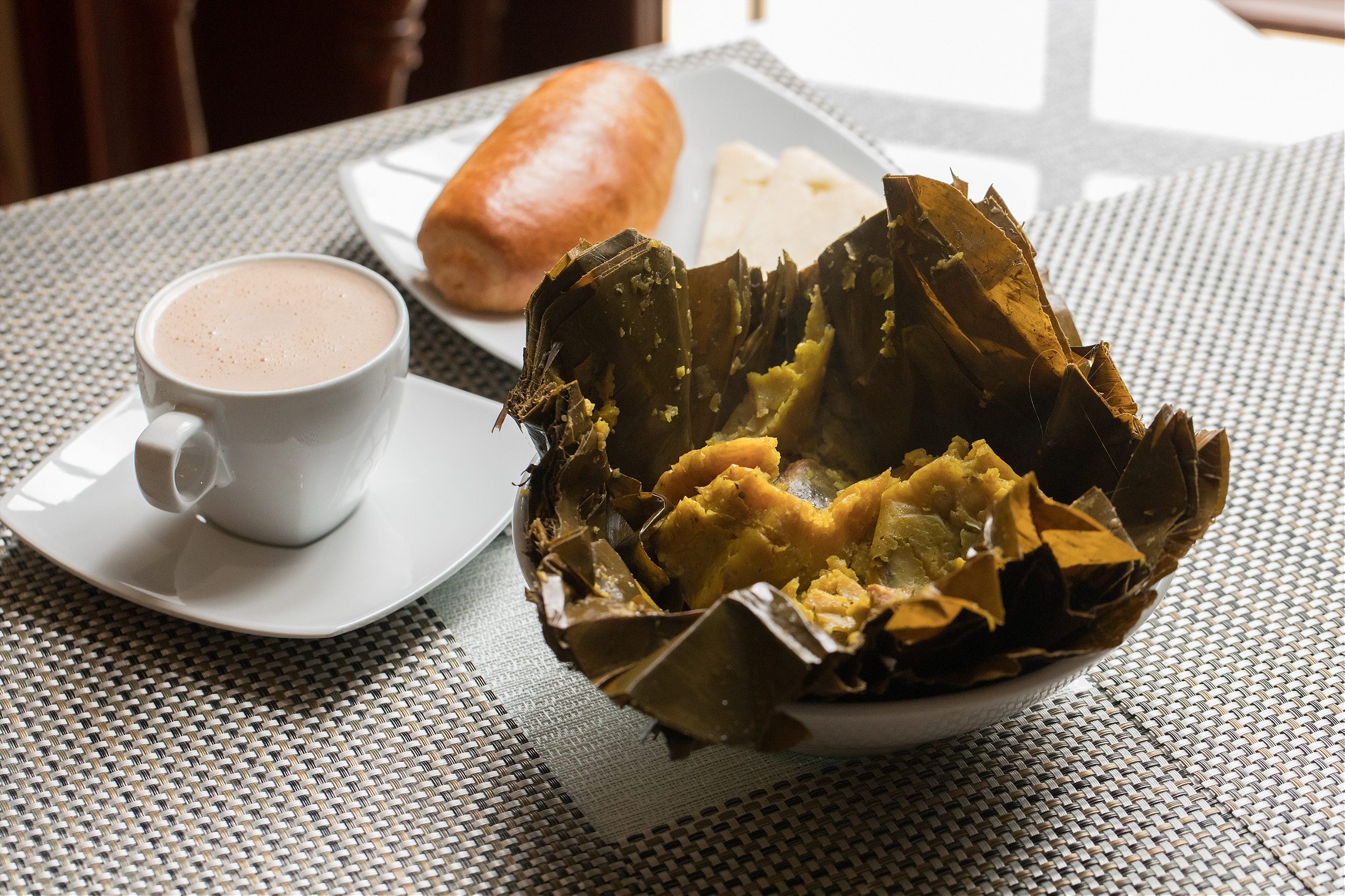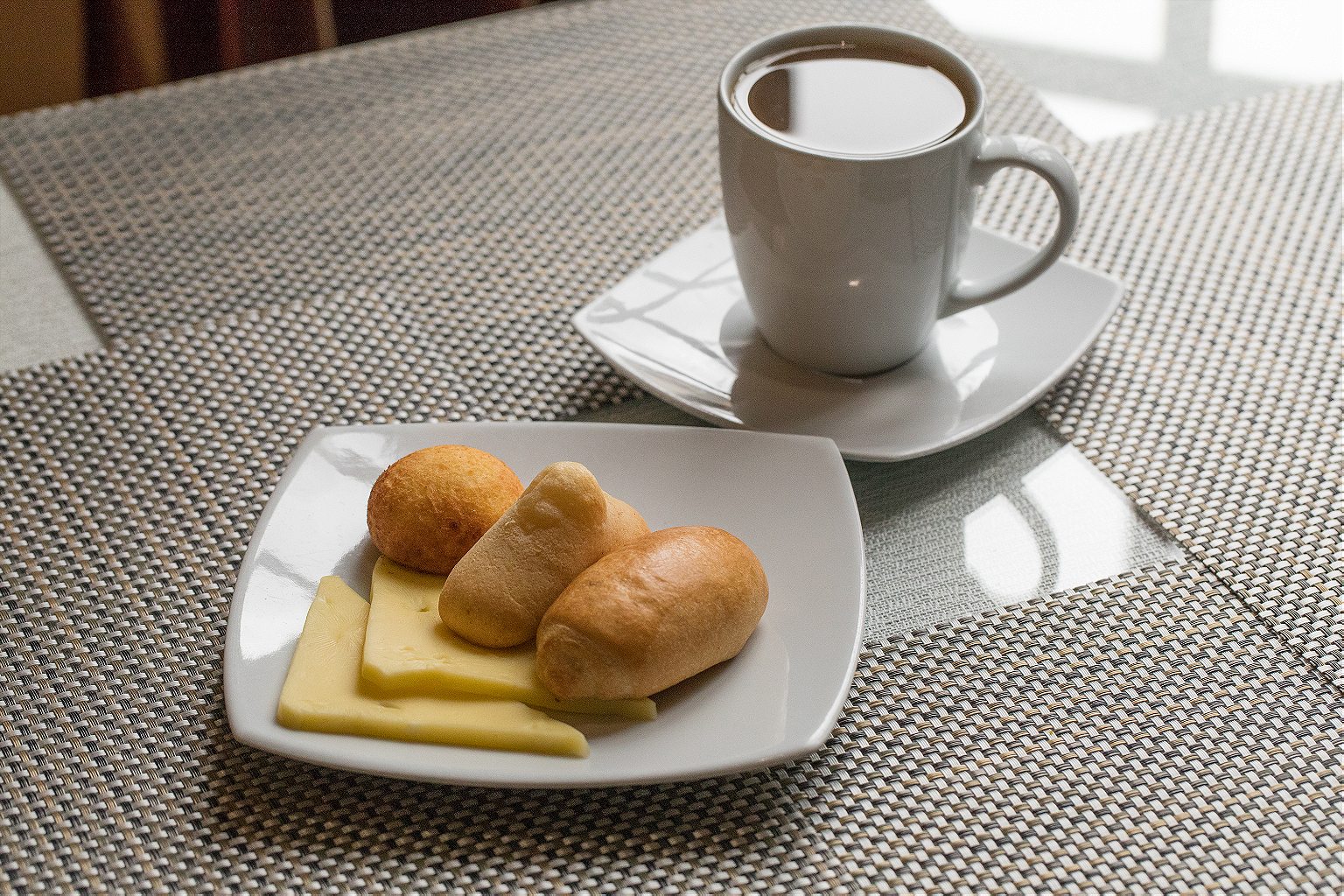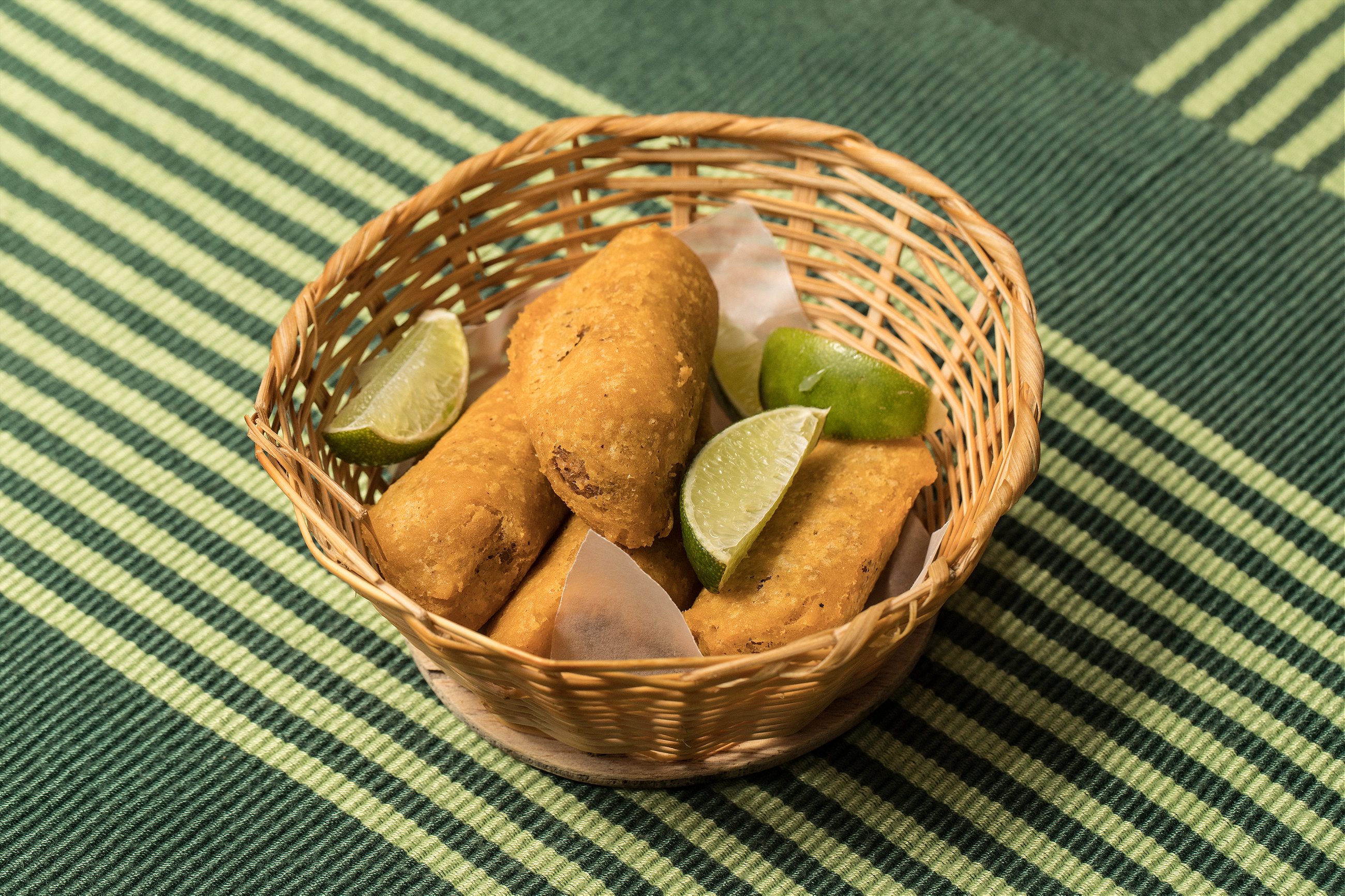The rich, comforting dishes that have nourished Bogotanos.
Bogotá’s cuisine is far older than the city. Before the Spanish arrived in the 16th century and founded the city of Santa Fe, there was a settlement called Bacatá, part of the political confederation of the indigenous Muisca people. Many ingredients on Bogotá tables can be traced back to the Muisca—such as the twin staples of potatoes and corn—and have endured, evolved, and enriched the foods the Spanish colonizers brought to the new world. Bogota’s food culture is often hearty, stodgy, and warming, all the better to fortify its citizens for the city’s cold climate. Here are the dishes that have fed and nourished Bogotanos, past and present.
Ajiaco at La Puerta Falsa

Bogotá’s staple dish, ajiaco is, essentially, a potato-based soup. What makes it a distinctively Bogotá dish are the three kinds of potatoes, grown in the Cundiboyacense highlands: sabanera (which has purple skin), pastusa (similar to an Idaho potato) and criolla (a small, yellow variety). The latter dissolve easily when cooked, which gives ajiaco its thick consistency. Ajiaco also includes corn and a South American herb called guasca. Many people add pulled chicken breast, others a chicken leg. You can also add capers, cream, avocado, and rice—it’s a a matter of personal or family preference, and fierce debate.
The Muisca people ate a version of ajiaco, with potatoes, corn, guasca, and the meat of the Andean guan bird (the Muisca didn’t lay eyes on a chicken until the Spanish arrived.) Other countries, such as Chile and Cuba, also have an ajiaco, but here legend has it that the soup got its name in Colombia, from the Muisca chief Aco and his wife Aj, who declared it their favorite dish. Try it at La Puerta Falsa, the city’s oldest-running restaurant.
Chicha at El Chorro de Quevedo
Indigenous Muisca society was deeply hierarchical. At certain times of the year, commoners had to pay tribute to the chiefs with offerings of gold and cotton sheets, at elaborate parties where chicha—an alcoholic drink made from fermented corn—flowed freely. Around 1820, Simón Bolívar, the first president of what is now referred to as Gran Colombia (which included modern-day Colombia, Ecuador, Venezuela, and Panama), signed a decree banning chicha, which was perceived by as an uncivilized drink. (However, peasants continued to make and consume it without much consequence.)
On Aug. 21st, 1923, a hefty tax was placed on chicha, sparking mass riots in Bogotá, dubbed The Chicha Revolution, in which over 600 angry Bogotanos stormed the city’s chicherías. But the forces behind the price hike were the owners of the new beer breweries, who had lobbied the government to tax chicha, arguing that beer was more sophisticated and caused fewer problems than the indigenous libation.
In 1948, President Mariano Ospina Pérez officially banned the drink. Again, brewery owners who wanted to eliminate their main competition were behind the crackdown. There was also a decades-long advertising smear campaign, with slogans such as “Chicha makes you stupid” and “Chicha fosters crime.” Chicha remained illegal until 1991, but it survived all the corporate crusades and bans. It’s still a strong part of Muisca heritage and a common drink in Bogotá.
Tamales with hot chocolate and bread at Pastelería Florida

Tamales, a traditional Mesoamerican dish, are thought to have originated thousands of years ago, and possibly spread from Mexico to Central and South America. In most cases, tamales are made of cornflour dough and steamed in a plantain leaf or corn husk. The Colombian kind are much larger than Mexican ones, with softer dough, and in Bogotá, a tamal is generally served with a cup of hot chocolate—an essential component of a classic Bogota breakfast, or the mid-morning snack known as onces.
Cacao, which grew in the Mayan lowlands, was precious to the Aztecs, but their version was a strong, spicy drink that the Spanish conquerors initially found both bitter and unpleasantly intoxicating. Drinking chocolate eventually took off in Europe when it was mixed with sugar, so the Spanish and others started cultivating it. By 1866, hot chocolate was a city staple. Bogotá intellectual José María Vergara wrote in his essay Las tres tazas (“The Three Cups”) that hot chocolate was the essential drink of Bogota, and dismissed (recently introduced) coffee as “tasting like medicine” and tea as a pretentious “sudorific”—something that induces sweating.
Hot chocolate is no less essential to Bogotanos today, who make it by breaking a chunk of cacao from a block and heating it with milk or water, then serve it with bread or pieces of cheese for dipping.
Changua at Hornitos

Changua, a word derived from the Muisca, is a hearty milk and egg soup, often served for breakfast. (Essentially, it’s eggs cooked to taste in a mixture of water, milk, and salt.) The traditional recipe is said to have been passed down through generations of families all the way back to the Muisca people, but the more modern version will have developed after Columbus’s second arrival, in the late 15th century, when the Spanish brought cows (and therefore, milk) to the new world. (Other ingredients include water, scallions, and coriander.) They say this dish became popular because it helped Bogotanos cope with the cold mornings. Changua comes with with calado, a hard bread, and some people also add cheese or almojábana, a cornflour and cheese roll. Changua tends to provoke strong reactions; people either love it or hate it.
Puchero Santafereño at Las Margaritas
Sancocho, a simple, hearty staple of Colombian cuisine, is a stew containing yams, potatoes, yucca, plantain, corn, several kinds of meat, and even fish. (Basically, everything people have in their kitchens.) It evolved from the Spanish cocido stews, with the addition of crops from the new world; almost everywhere in Latin America has their own version. The Bogota one is called puchero santafereño (after the Spanish word for “stewpot” and the city’s colonial name, Santa Fe) and contains potatoes, arracacha (a root vegetable), plantain, yucca, corn, chicken, beef, and pork, topped with an onion, garlic and tomato sauce called hogao.
Aguapanela with cheese and almojábana

Panela is unrefined cane sugar, made by boiling and evaporating cane sugar juice, which is then shaped into blocks—originally devised as a simpler way to transport sugar. Panela is of huge important agricultural (and economic) importance to Colombia, which is the world’s second largest producer of non-centrifugal cane sugar after India. (It was from India that sugar was introduced to the West, courtesy of the Portuguese.) Panela is a large component of the Bogotano—and Colombian—diet; most people have a block in their pantry, used in everything from tea to cakes. Because it’s cheap and abundant, many poorer Colombians derive the bulk of their calories from panela, and the average Colombian consumes about 75 lbs of panela per year.
Boiling panela blocks in water makes aguapanela, a sweet drink consumed hot or cold, with lemon juice. Aguapanela is also considered a natural energy drink, thanks to its hefty calories (and the fact that it’s basically sugar); world-famous professional cyclists from the Cundiboyacense highlands swear by it. It’s also––when boiled together with ginger, chamomile and lemon––a local cold remedy. Aguapanela is often served with different types of breads, such as almojábanas, corn envueltos, and arepas (flat cornbread).
Empanadas at El Kiosko

Colombians like their greasy food, and Bogotá residents are no exception. Empanadas are particularly popular. They’re essentially a form of dumpling, thought to originate in Galicia, Spain or in Portugal, where the dough is usually made from wheat or pastry, and usually baked. (Empanadas are thought to have evolved from the samosas consumed in Asia and the Middle East.)
In Bogotá, the dough is typically made from corn, or sometimes wheat, but the empanadas are almost always fried. The most popular filling is mashed potatoes with shredded beef, but you can also find fillings of cheese, chicken, rice, and ground beef (a classic filling for baked empanadas in Bogotá that other Colombians tend to dislike passionately).
Some of the best empanadas in town are found in El Kiosko, a stand serving baked and fried delicacies in the Cedritos neighborhood in northern Bogotá. Try them with lemon and ají, (a spicy sauce made from chilli, tomato, coriander and onion).
Corrientazo at La Nona, 21 Vueltas, Casa Lis, Sabrosito, and Zukini
A corrientazo is an “electric charge,” but in Colombia, it refers to a large, affordable lunch—and the charge of energy it provides. It’s a go-to meal for working folk, rich in calories and cheap enough not to make a dent in most Colombians’ modest wages. The tradition is said to date back a few generations, when working men went home for a big lunch (and perhaps a siesta.) While people still do that in smaller towns, it’s not practical in the big city—hence, the corrientazo set lunch menu.
A corrientazo is always a carb-bomb mixture, known as ACPM (which also happens to be the Colombian name for Diesel fuel), an acronym for arroz, carne, papa and maduro (rice, meat, potatoes, and plantains). A corrientazo menu typically includes a soup, a main dish (containing rice, meat, salad, and beans, green peas, chickpeas, or lentils), juice, and sometimes dessert, all for a price ranging from 5,000 to 12,000 pesos (US$1.80 to US$4.30). There is steeper pricing in the northern part of the city, with corrientazos that can go up to 15,000 pesos (US$5.40). But when it comes to corrientazos, more expensive doesn’t necessarily mean better.
Fritanga at Piqueteadero Doña Segunda

Fritianga is a Spanish-influenced feast of assorted grilled meats (beef, pork, chicken), sausages (chorizo, morcilla, or chunchullo—small intestine), and offal such as bofe (lungs), heart, and sonrisa (another type of small intestine), and comes with potatoes, plantains, and arepas. This piquete (“food to share”) also comes with an ice-cold refajo, a mixture of light beer and soda. Fritanga first became popular in the Boyacá region north of Bogotá, but after many people from there migrated to the city, it became a staple of Bogotá too, especially in the city suburbs. Every weekend, Bogotanos descend en masse on piqueteaderos—barbecue restaurants—on the city outskirts.
You can get your mixed meat fix in the city, too—at Piqueteadero Don Jorge in the Kennedy area in southern Bogotá, or in market squares. One of the most well-regarded spots is Piqueteadero Doña Segunda in 12 de Octubre market, in the Barrios Unidos district.